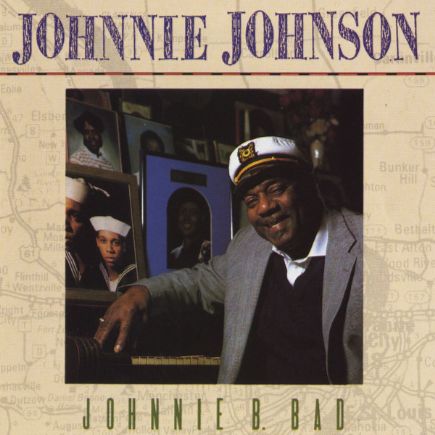Every Day I Have the Blues: trajectoire d’un classique entre blues et jazz
Parmi les titres les plus emblématiques du blues, Every Day I Have the Blues occupe une place singulière: à la fois expression brute d’un quotidien difficile et point de rencontre entre les mondes du blues et du jazz. Si la paternité du morceau a longtemps été discutée, la version la plus ancienne remonte aux années 1930 et est attribuée à Aaron ‘Pinetop’ Sparks et à son frère Milton.
Interprété à l’origine dans les tavernes de Saint-Louis, le morceau est enregistré pour la première fois le 28 juillet 1935 par Pinetop Sparks, accompagné du guitariste Henry Townsend. C’est à la fin des années 1940 que Every Day I Have the Blues entre véritablement dans la lumière, avec une reprise marquante de Memphis Slim en 1949.
Sur le plan musical, le morceau repose sur une structure simple, typique du blues traditionnel, qui laisse pourtant une grande liberté aux interprètes. Sa mélodie chantante et ses paroles récurrentes expriment une mélancolie profonde, une plainte universelle face à la rudesse du quotidien, emblématique de l’esthétique blues.
Johnnie Johnson en héritier du blues et du rock’n’roll
Le 11 avril 2003, à Sydney, Johnnie Johnson monte sur la scène du club The Basement pour un concert exceptionnel. Accompagné par Les Karski à la guitare, Roy Daniel à la basse et Ace Follington à la batterie, le pianiste et chanteur américain livre une version vibrante de Every Day I Have The Blues. Cet enregistrement live témoigne de la vitalité d’un musicien alors octogénaire, mais toujours habité par l’énergie et l’élégance qui ont marqué sa carrière.
Dans cette interprétation (Youtube), Johnson conjugue la tradition du blues avec une modernité rythmique héritée de ses années aux côtés de Chuck Berry. Son jeu de piano, caractérisé par des lignes robustes de main gauche et un swing lumineux de main droite, sert de colonne vertébrale à l’ensemble.
Sa voix, grave et légèrement rocailleuse, traduit la mélancolie universelle contenue dans les paroles, tout en affirmant une puissance expressive indéniable. Les Karski, avec un jeu de guitare incisif et bluesy, apporte des contrechants vibrants, tandis que Daniel et Follington assurent une rythmique souple et solide, donnant au morceau une pulsation organique et irrésistible.
Every Day I Have the Blues: trayectoria de un clásico entre el blues y el jazz
Entre los títulos más emblemáticos del blues, Every Day I Have the Blues ocupa un lugar singular: es a la vez una expresión cruda de un día a día difícil y un punto de encuentro entre los mundos del blues y del jazz. Aunque durante mucho tiempo se ha debatido sobre su autoría, la versión más antigua del tema remonta a los años treinta y se atribuye a Aaron ‘Pinetop’ Sparks y a su hermano Milton.
Interpretado originalmente en las tabernas de San Luis, el tema fue grabado por primera vez el 28 de julio de 1935 por Pinetop Sparks, acompañado por el guitarrista Henry Townsend. Fue a finales de los años cuarenta cuando Every Day I Have the Blues entró verdaderamente en la luz, gracias a una interpretación notable de Memphis Slim en 1949.
Desde el punto de vista musical, la pieza se basa en una estructura sencilla, típica del blues tradicional, que no obstante deja una gran libertad a los intérpretes. Su melodía cantarina y sus letras recurrentes expresan una profunda melancolía, una queja universal ante la dureza del día a día, emblemática de la estética del blues.
Johnnie Johnson, heredero del blues y del rock’n’roll
El 11 de abril de 2003, en Sídney, Johnnie Johnson subió al escenario del club The Basement para ofrecer un concierto excepcional. Acompañado por Les Karski a la guitarra, Roy Daniel al contrabajo y Ace Follington a la batería, el pianista y cantante estadounidense interpretó una vibrante versión de Every Day I Have The Blues. Esta grabación en vivo testimonia la vitalidad de un músico octogenario en aquel momento, pero aún marcado por la energía y la elegancia que definieron su trayectoria.
En esta interpretación (Youtube), Johnson combina la tradición del blues con una modernidad rítmica heredada de sus años junto a Chuck Berry. Su piano, caracterizado por líneas robustas con la mano izquierda y un swing luminoso con la derecha, constituye la columna vertebral del conjunto.
Su voz, grave y ligeramente áspera, transmite la melancolía universal contenida en la letra, al tiempo que afirma una expresividad indiscutible. Les Karski, con un estilo de guitarra incisivo y bluesy, aporta contracantos vibrantes, mientras que Daniel y Follington sostienen una base rítmica flexible y sólida, otorgando a la pieza una pulsación orgánica e irresistible.
Every Day I Have the Blues: traiettoria di un classico tra blues e jazz
Tra i brani più emblematici del blues, Every Day I Have the Blues occupa una posizione particolare: esprime al contempo una cruda realtà quotidiana e rappresenta un punto d’incontro tra i mondi del blues e del jazz. Sebbene la paternità del brano sia stata a lungo discussa, la versione più antica risale agli anni Trenta e viene attribuita ad Aaron ‘Pinetop’ Sparks e a suo fratello Milton.
Originariamente eseguito nelle taverne di Saint Louis, il brano fu registrato per la prima volta il 28 luglio 1935 da Pinetop Sparks, accompagnato dal chitarrista Henry Townsend. Fu alla fine degli anni Quaranta che Every Day I Have the Blues conobbe una vera notorietà, grazie a una rilettura significativa di Memphis Slim nel 1949.
Sul piano musicale, il pezzo si basa su una struttura semplice, tipica del blues tradizionale, ma offre al tempo stesso una grande libertà espressiva agli interpreti. La sua melodia cantabile e i testi ricorrenti esprimono una profonda malinconia, un lamento universale di fronte alla durezza della vita quotidiana, emblematico dell’estetica blues.
Johnnie Johnson, artigiano del blues e del rock’n’roll
L’11 aprile 2003, a Sydney, Johnnie Johnson salì sul palco del club The Basement per un concerto straordinario. Accompagnato da Les Karski alla chitarra, Roy Daniel al contrabbasso e Ace Follington alla batteria, il pianista e cantante statunitense offrì una vibrante versione di Every Day I Have The Blues. Questa registrazione dal vivo testimonia la vitalità di un musicista allora ottantenne, ma ancora animato dall’energia e dall’eleganza che hanno segnato tutta la sua carriera.
In questa interpretazione (Youtube), Johnson unisce la tradizione del blues a una modernità ritmica ereditata dagli anni trascorsi al fianco di Chuck Berry. Il suo pianoforte, caratterizzato da robuste linee di mano sinistra e da uno swing luminoso con la destra, costituisce la spina dorsale dell’insieme.
La sua voce, grave e leggermente roca, esprime la malinconia universale contenuta nel testo, affermando al contempo una forza espressiva inconfondibile. Les Karski, con una chitarra incisiva e dal timbro bluesy, aggiunge controcanti vibranti, mentre Daniel e Follington garantiscono una base ritmica flessibile e solida, donando al brano una pulsazione organica e irresistibile.
Every Day I Have the Blues: the journey of a classic between blues and jazz
Among the most iconic blues titles, Every Day I Have the Blues holds a unique place: it is both a raw expression of a difficult daily life and a meeting point between the worlds of blues and jazz. While the song’s authorship was long debated, the earliest known version dates back to the 1930s and is attributed to Aaron ‘Pinetop’ Sparks and his brother Milton.
Originally performed in the taverns of St. Louis, the song was first recorded on July 28, 1935, by Pinetop Sparks, accompanied by guitarist Henry Townsend. It was in the late 1940s that Every Day I Have the Blues truly came into the spotlight, thanks to a notable rendition by Memphis Slim in 1949.
Musically, the piece is built on a simple structure, typical of traditional blues, yet it offers great interpretive freedom. Its singable melody and recurring lyrics convey a deep melancholy—a universal lament in the face of life’s hardships—emblematic of the blues aesthetic.
Johnnie Johnson, heir to the blues and rock ’n’ roll
On April 11, 2003, in Sydney, Johnnie Johnson took the stage at the The Basement club for an exceptional concert. Accompanied by Les Karski on guitar, Roy Daniel on bass, and Ace Follington on drums, the American pianist and singer delivered a vibrant rendition of Every Day I Have The Blues. This live recording captures the vitality of a musician then in his eighties, still driven by the energy and elegance that defined his career.
In this interpretation (Youtube), Johnson blends the tradition of the blues with a rhythmic modernity shaped by his years alongside Chuck Berry. His piano playing, marked by strong left-hand lines and a luminous right-hand swing, provides the backbone of the ensemble.
His voice, deep and slightly gravelly, conveys the universal melancholy of the lyrics while affirming undeniable expressive power. Les Karski, with incisive and bluesy guitar work, adds vibrant counterlines, while Daniel and Follington supply a supple and steady rhythm, giving the piece an organic and irresistible pulse.



